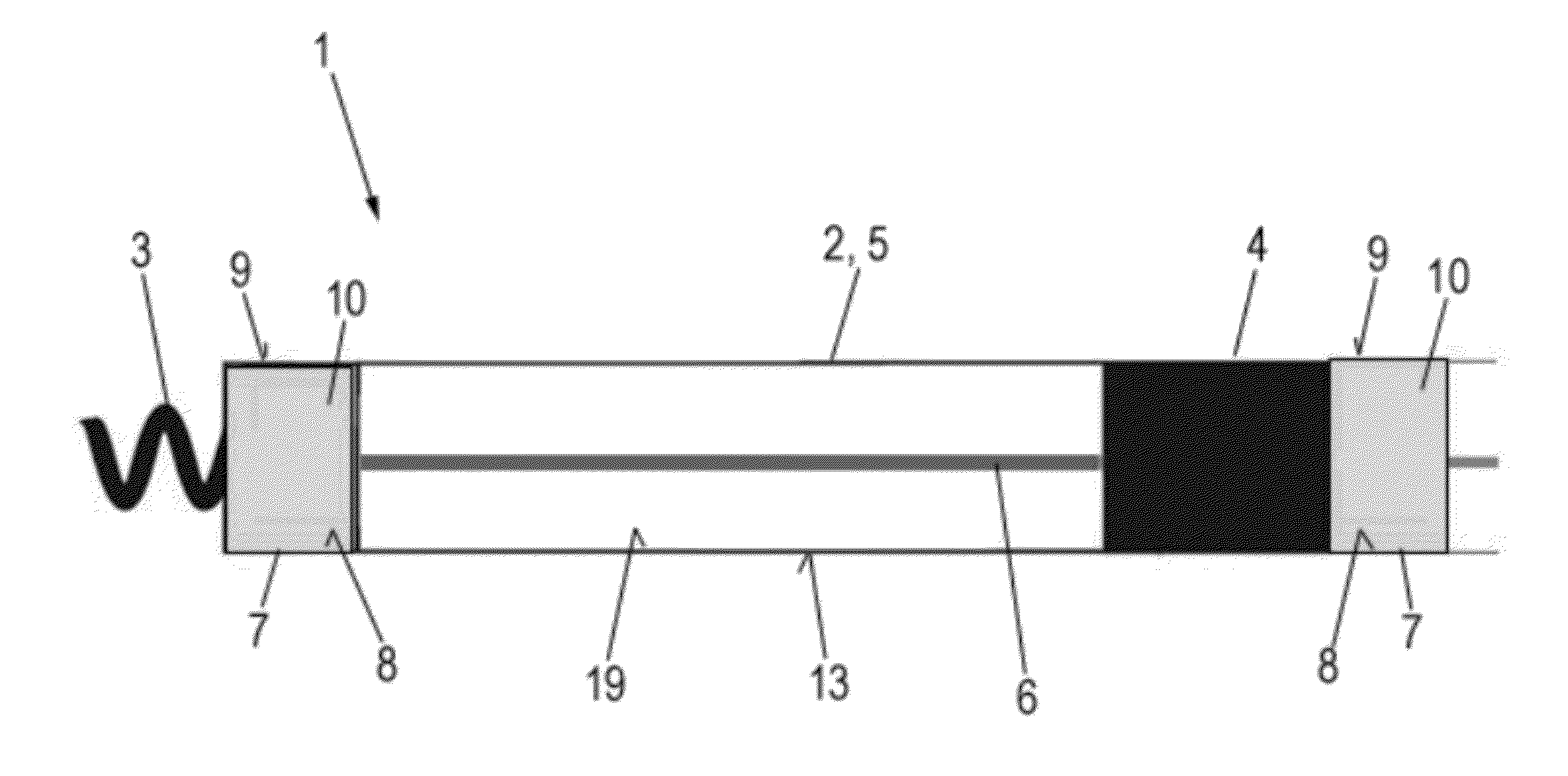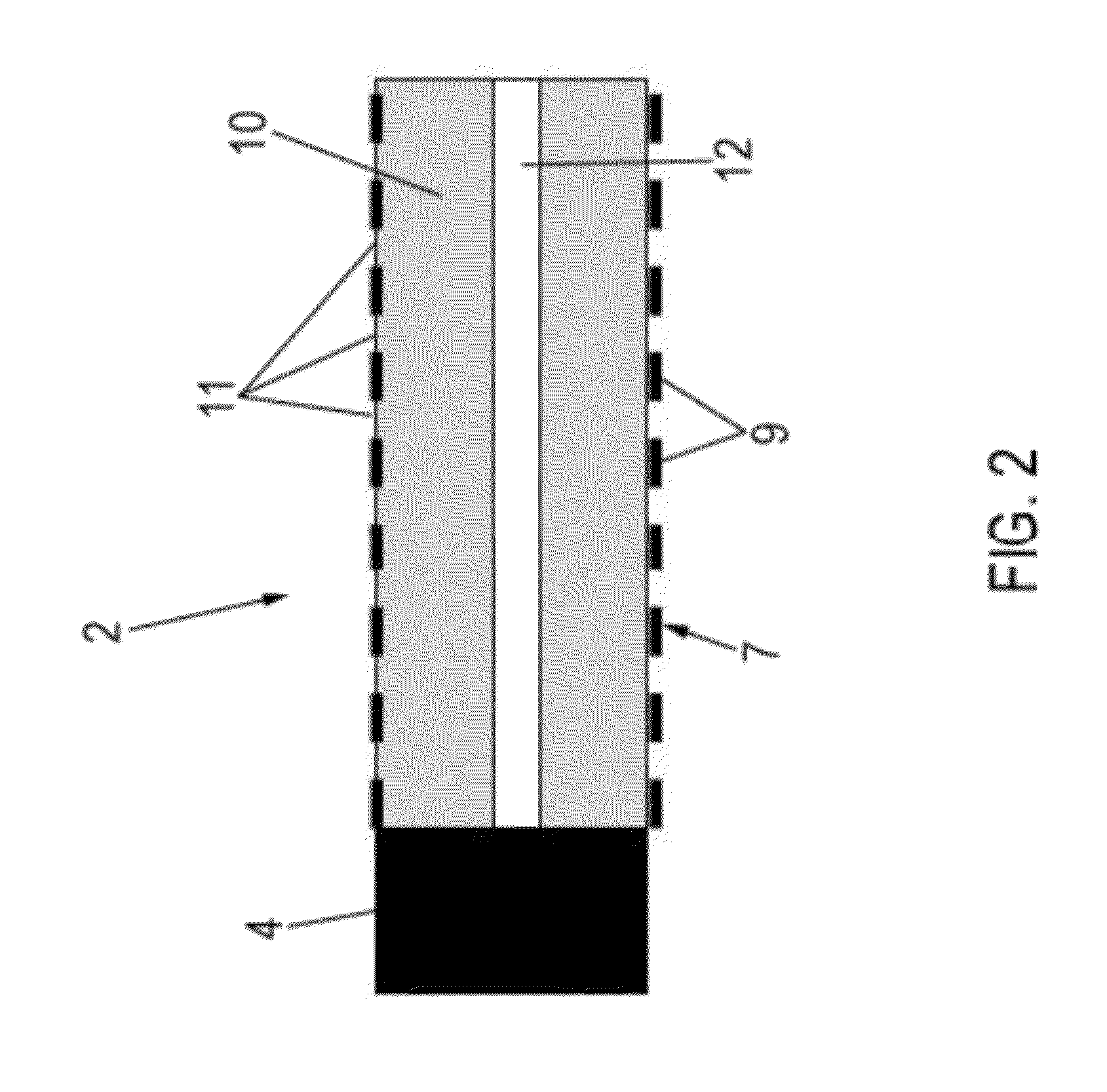Implantable electrode lead and hydrogel sensor
a technology of hydrogel sensor and implanted electrode lead, which is applied in the field of medical engineering, can solve the problems of unable to make reliable clinical prognosis, the electrodes and the surrounding tissue layers will heat up, and the implanted electrode lead is typically denied an examination,
- Summary
- Abstract
- Description
- Claims
- Application Information
AI Technical Summary
Benefits of technology
Problems solved by technology
Method used
Image
Examples
Embodiment Construction
[0046]FIG. 5 shall be considered first; it shows a schematic depiction of an electrode lead 101 that is permanently implanted in a heart 105 and is well-known in the prior art. Electrode lead 101 is designed e.g. as a shock electrode lead in this case. It has a distal section 103 and a proximal end 102 which is connected to an implanted ICD 104 (implantable cardioverter / defibrillator). This is a device that can generate shock pulses e.g. to terminate a life-threatening ventricular fibrillation. Electrode lead 101 extends through right atrium 106 and is positioned via its distal section 103 inside right ventricle 107. Distal section 103 is provided with a shock electrode 108 designed in the form of a helical wire, and which is in contact with the wall of ventricle 107. The oblong helical shape of shock electrode 108 serves to enlarge the effective electrode surface. Distal section 103 furthermore includes a ring electrode 109 and a conical point electrode 110, which can be used for p...
PUM
 Login to View More
Login to View More Abstract
Description
Claims
Application Information
 Login to View More
Login to View More - R&D
- Intellectual Property
- Life Sciences
- Materials
- Tech Scout
- Unparalleled Data Quality
- Higher Quality Content
- 60% Fewer Hallucinations
Browse by: Latest US Patents, China's latest patents, Technical Efficacy Thesaurus, Application Domain, Technology Topic, Popular Technical Reports.
© 2025 PatSnap. All rights reserved.Legal|Privacy policy|Modern Slavery Act Transparency Statement|Sitemap|About US| Contact US: help@patsnap.com



